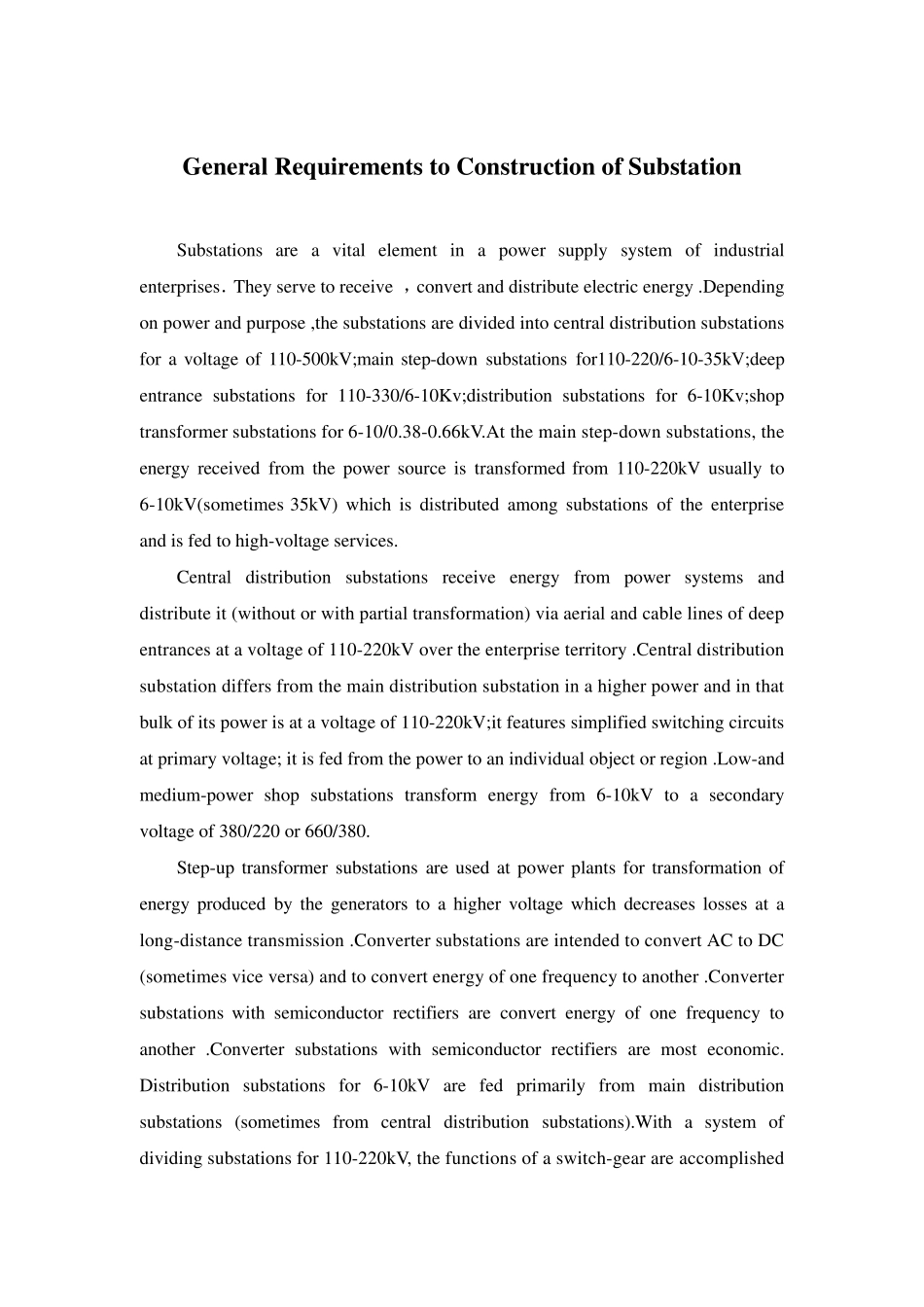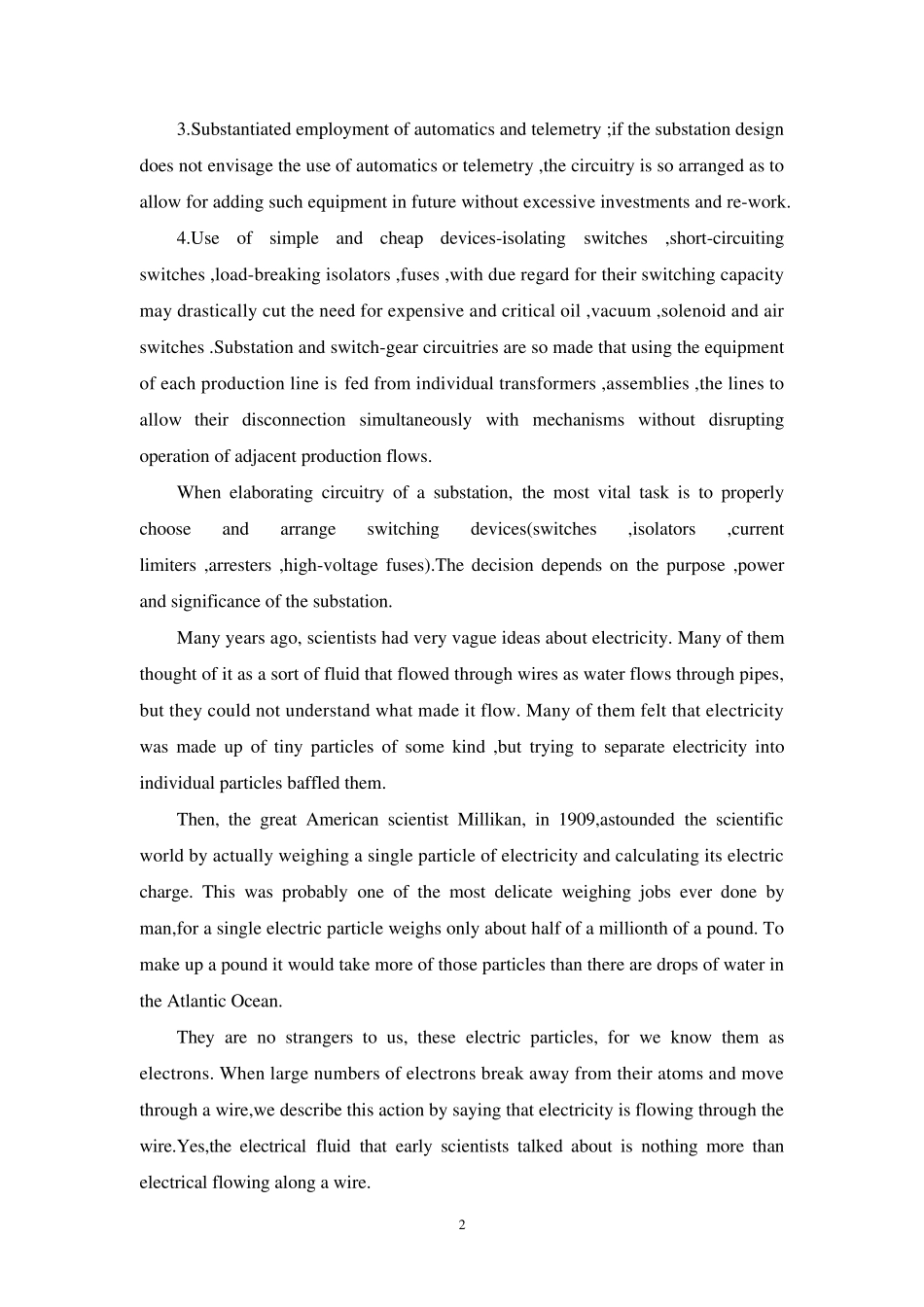General Requ irements to Constru ction of Su bstation Substations are a vital element in a power supply system of industrial enterprises.They serve to receive ,convert and distribute electric energy .Depending on power and purpose ,the substations are divided into central distribution substations for a voltage of 110-500kV;main step-down substations for110-220/6-10-35kV;deep entrance substations for 110-330/6-10Kv;distribution substations for 6-10Kv;shop transformer substations for 6-10/0.38-0.66kV.At the main step-down substations, the energy received from the power source is transformed from 110-220kV usually to 6-10kV(sometimes 35kV) which is distributed among substations of the enterprise and is fed to high-voltage services. Central distribution substations receive energy from power systems and distribute it (without or with partial transformation) via aerial and cable lines of deep entrances at a voltage of 110-220kV over the enterprise territory .Central distribution substation differs from the main distribution substation in a higher power and in that bulk of its power is at a voltage of 110-220kV;it features simplified switching circuits at primary voltage; it is fed from the power to an individual object or region .Low-and medium-power shop substations transform energy from 6-10kV to a secondary voltage of 380/220 or 660/380. Step-up transformer substations are used at power plants for transformation of energy produced by the generators to a higher voltage which decreases losses at a long-distance transmission .Converter substations are intended to convert AC to DC (sometimes vice versa) and to convert energy of one frequency to another .Converter substations with semiconductor rectifiers are convert energy of ...


